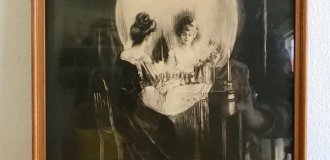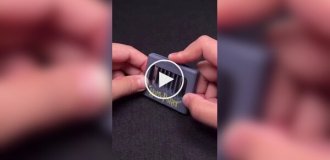From the history of Front-wheel drive: VAZ 2108 (35 photos)
The decision to write an article about the VAZ-2108 did not come immediately. What to write about a car that almost everyone seems to know about! For all its shortcomings, the G8 was a revolutionary machine for the USSR. And the point here was not even about the newfangled front-wheel drive or aerodynamic design, the philosophy of the car itself was different. For the first time, a Soviet person was allowed to have a three-door car of a non-trivial design with a sporty character. And how much scope for tuning the Samara family gave its owners in the nineties! Everything changed - from the headlights to the exhaust system. Having appeared back in 1984, this car seems to have no intention of leaving the city streets. “Samara” changed its status from a prestigious Soviet car to the first car of a Russian student, but did not lose its relevance. Today we will talk about, perhaps, the most beloved and hated, the most spectacular and the most controversial, but without a doubt, the most scandalous production car of the USSR - VAZ 21083 “Sputnik/Samara”...

It must be said that, despite the beginning of the spread of front-wheel drive throughout the world, Soviet automakers were very skeptical about it at first. Debates arose at both technical and technological levels. Will Soviet industry even be able to master, for example, constant velocity joints, necessary for the production of a car of this class? It was also obvious that the promising family needed a fundamentally new body; the classic family was rapidly becoming outdated, even when modernized to version 05/05/07. By the way, below are the search models of the VAZ 2101 modernization, created by the factory designer V. Pashko. Pay attention to the spectacular American styling of these samples - we will see many of the solutions used here in Samar modifications. By the way, the name Samara was originally intended for the Western market; for the domestic market the name Sputnik was invented, but it “didn’t work”, and soon all the cars of the family received “Samara” nameplates on the back door. Because the machine was revolutionary in many ways, it was decided to involve Western partners in its creation. Negotiations were held with several companies, but ultimately the German Porsche was chosen as the main partner. This is how the chief designer of VAZ in 1975 – 1996 describes the decision to cooperate. Georgy Konstantinovich Mirzoev in the book “A Flame of High Thought”: In 1975, the president of the Porsche company, E. Fuhrmann, met with V. Polyakov, then already the Minister of the Automotive Industry of the USSR. And in the conversation he noted that the German state caused a lot of trouble to the Soviet Union by starting the Second World War, and that this must be compensated in some way. As a result, an agreement was born between VAZ and Porsche under the auspices of the State Committee for Science and Technology (SCNT) of the USSR. The work was designed for three years - from 1976 to 1978, at 500 thousand Deutschmarks per year. During this period, the following were developed and manufactured: a version of the Niva car with aluminum attachment parts; engine running on lean gasoline mixtures; running layout of the modernization of the VAZ-2103 car in interior and exterior. For two and a half years, a group of our specialists was constantly at Porsche, regularly updated, which allowed engine engineers, bodybuilders, and designers to “get smart.” When choosing a technology consultant, our technologists had a clear opinion: to use FIAT, since they had a better understanding of VAZ technology, equipment, and layouts than we did. But, since FIAT itself refused to cooperate with us on front-wheel drive, it offered its subsidiary UTS, specializing in technological developments. So, as we see, VAZ itself, the German Porsche and the Italian UTS worked on the creation and development of Samara, but there were also dozens of enterprises that supplied components throughout Europe! We can say that the project was global, but the stakes were high. VAZ's last conquest in Europe at that time was the completely revolutionary Niva, which sold more than 500 thousand copies worldwide. Perhaps these are not very large numbers for the giants of the automotive industry, but for one single Soviet model, this was a true achievement, and the new model should not have “lost its face.” It should be noted right away that, unlike the “stuffing,” Western experts had nothing to do with the design of Sputnik. The image was born gradually, and at the stage of sketch development, the style of the front part even resembled the American Pontiacs of those years.


The 1978 sample and the team of its creators.

Pay attention to the door handles recessed into the sides - this solution was later abandoned. There was even a legend that a certain Russian emigrant from Porsche gave our engineers a handle from the 924 model. However, such legends are not without foundation. In addition to the obvious advantages that cooperation with the global engineering giant provided, our bureaucratic system often “failed” and gave rise to unpleasant precedents. Tester Konstantin Kukushkin recalls: The sparks of good solutions (no worse than branded ones) were quickly extinguished by our bureaucratic machine. The company offered us solutions, we had to evaluate them within a certain period of time and issue a conclusion on their suitability in our conditions. We usually did not meet the required deadlines, but in order not to lose face and not show our inability to work quickly, these proposals were approved in advance. Later, when it became clear that what was proposed was unacceptable to us, we had to look for a new solution. The company readily offered another option - just pay. When fine-tuning the body, during testing, we came up with good solutions, sometimes even better than those offered by the company. But our bureaucracy completely rejected them. Contract! So that my statements do not seem unfounded to anyone, I will give two specific examples from personal experience. Thus, the side door design proposed by the company did not want to fit into the norm. V. Filimonov and I struggled with the sagging of the door for a long time, reworking several options. The result of the search was a door that meets all standards, and at the same time is 200 g lighter. Relevant reports and “forgangs” were written about this. But we were still forced to “torture” the design developed by the company. When it was finally completely rejected, the company offered a new one - ours, made by us a year ago, polishing it and refining the inner panel. The door was accepted as an offer from the company! A similar situation occurred with the battery pad. During a frontal impact, the battery did not want to stay on the platform (or the platform did not want to hold the battery). I made a platform that was 100 g lighter than the German one and easier to manufacture. She passed the test, but was not accepted. She was sent to a Porsche. She passed the test there too. The company representative, Mr. Getzer, when testing my site, said: “Gut.” But branded is better. The company's site was accepted - it was calmer. What happened, happened. You can't erase a word from a song. There were also funny situations. Porsche specialists suggested putting the appropriate inscription on those parts to which they had a hand. However, the Soviet side refused. The magazines wrote: ... “With the participation of German specialists.” Any European manufacturer would be honored to have Porsche nameplates on the parts of their car, but “the Soviets have their own pride”... It must be said that for the domestic automotive industry the project developed at an incredibly fast pace. If in 1975 a fundamental decision was made to cooperate, then already in 1978 the first model was built, and in 1984 the car went into mass production. Interestingly, there was an incident with this first sample. The car was assembled exactly on December 31, 1978, but it was not possible to start the engine then. However, already on January 2, 1979, the designers began testing again. The car was developed according to the accepted German system. The project was given the name “Gamma”, and each new sample was given a series with two zeros - 100, 200 and 300. The first number of the series reflected the readiness of a particular sample for mass production. It should be taken into account that the coordination of three engineering sites: Tolyatti, Stuttgart and Turin was carried out without the use of modern data transmission technologies. Seconded specialists from different companies were constantly “cruising” between the three cities. One of the first

Search sketches and the VAZ 2101 restyling project allow us to judge the overall high level of design at VAZ in those years.

Plasticine model of VAZ 2108

Plasticine model of a VAZ 2109. Noteworthy are the door handles a la Moskvich 2141 and the huge rear window

At the same time, in addition to developing the car itself and putting it into production, there were still a lot of organizational problems to be solved in relation to suppliers. As we know, the problem of high-quality Russian components at the plant has not yet been resolved, and then it was necessary to literally knock on the thresholds of departments and factories in order to persuade enterprises to produce this or that type of product of the appropriate quality and the required configuration. Below is one illustrative example. Technologist A. Zevakin recalls: There were many difficulties with the production of glazing for the new VAZ-2108 cars at the Bor Glass Factory. The windshield and tailgate glass were accepted for production without any major objections. But the development of sliding glass doors and sidewall windows met strong resistance from glaziers. Of course, there were plenty of technological difficulties. Cylindrical (concave) glass is a new thing for them, but at first they didn’t even want to try anything. And this is understandable - why do they need an extra headache? And only thanks to the intervention of G. Mirzoev, who managed to come to an agreement with their Moscow Main Command, the plant agreed to produce a test batch of glass. The work was headed by the chief engineer of the glass factory, A. Zhimalov, and deputy chief technologist, V. Tarbeev. The UGK sent me. Everyone together inspected and selected furnaces and presses, onto which we then installed our stamps, having previously wrapped them in fiberglass. The fact is that the stamps were made of wood, and they had to work in contact with hot glass. Many plant specialists came to the first pressing. Later I understood all the difficulties that glass specialists foresaw. Out of 60 processed blanks, only 11 usable glasses were obtained - 7 right and 4 left. The rest are fights or marriages based on fit. But only two shifts were spent on preparation, not counting the fact that the entire module was stopped for our needs. Then there were many trips to the glass factory with V. Unzhakov, Yu. Shevelev, V. Kuznetsov, D. Khusainov - to fine-tune the working equipment and manufacture glazing. Each such trip, although difficult, made it possible to ensure the assembly of prototypes in a timely manner. There were such problems with literally everything! Rubber seals for glass, shock-absorbing bumpers made of glass-filled polyurethane - everything was given “with a fight.” Soviet industry in many areas reached a new level of production with the G8, but this level was very difficult... By the way, initially, the family was supposed to include models with two body types (three- and five-door hatchback) and three engines of 1.1, 1.3 and 1.5 liters, but later the need to develop a sedan became clear, which stretched right up to 1990 ...Competing cars. Seat Rondo (1982-1986)

Skoda Favorit (1987-1995) - analogue

Finally, in 1984, a pilot batch of cars was produced. Of course, the Za Rulem magazine could not help but note such a significant event and dedicated several of its issues to the G8. A detailed article about the new car appears in two pre-New Year magazines: “Actually, the VAZ 2108 is not just a new car, but the first model of a fundamentally new design family of cars. When its technical specifications were approved in 1978, preference was given to a layout with front driving wheels...” “As comprehensive tests and operation in different climatic and road conditions have shown, the VAZ 2108 not only differs sharply in its consumer qualities from other common us cars. It is not inferior to the best foreign analogues of its class. The machine is well adapted for use in our country and in these conditions, we can safely say, it is superior to foreign models.”


In 1989, “Behind the Wheel,” “with some abbreviations,” cites a test from the English magazine “Car,” which tested the Ford Escort and the G8.

Since the VAZ 2108 was not only a car for the domestic market, but also for the external one, it required a serious advertising campaign. To promote the new model, the all-powerful Autoexport used the most advanced technologies - advertising in automobile publications, the creation of videos and, of course, the formation of a sporty image of the brand. This is worth dwelling on in more detail. French advertising of Samara

Advertising photo by V. Khetagurov

Based on the G8, several truly unique racing cars were developed, including rally cars for intra-Union competitions with a classic layout and real mid-engine monsters: Lada Eva, Lada Samara T3, VAZ 2108 Rally 4x4. The first such car was the VAZ 2108-Rally, created in the bureau forced tests of the Office of the Chief Designer of VAZ. Basically, it had a converted “eight” body, in the center of which a 150-horsepower 16-valve engine was installed, driving the rear wheels. Later, an all-wheel drive modification of the VAZ-2108-RALLI 4x4 was created, and in 1987 a heavy-duty Eva was built in Vilnius. VAZ 2108 Rally 4X4

Here I tried to depict

Development of the VAZ 29081. According to the project, the car was supposed to have a three-hundred-horsepower engine.

To be fair, it is worth noting that the Lada Eva has

Lada Eva


Full-scale production of the VAZ 2108 began in 1985, in 1987 the “nine” was released, and only in 1990 – the “ninety-nine”. In the same year, VAZ “front-wheel drive” vehicles lost their famous terrible “beak” in the design of the front end and received so-called “long” front fenders and a calmer radiator grille. Also in the early nineties, the “low” dashboard was replaced by a “high”, more refined one, from the VAZ 21099 model.

One of the options for designing the front end of a VAZ 21099. An analogy immediately arises with the restyling project for a penny in the seventies. The name on the front end does not contradict the truth. Before the project appeared

In 1990, at the Brussels Motor Show, the permanent dealer of Soviet cars in Europe, Scaldia-Volga, presented a stylish Lada Natasha convertible prepared for small-scale production. In Brussels, and later in Bratislava and Prague, small production facilities are opened, where new cars are produced in small batches. The bulk of them are exported to France and Spain, where these machines enjoyed enormous success. Lada Natasha

Lada Carlota

Experimental Lada with original targa body

Another concept car, this time with a coupe body. It also didn’t go into series.

At the auto show, in addition to the aforementioned Lada Natasha, the company also presented a restyled version of the G8 Lada Carlota and a “charged” Lada Samara RSI, created in the VAZ sports car department. The plastic body kit was manufactured by the German company Pichler, and the tuning company Mangoletti adapted the “racing” injection system to the forced 1600 cc engine, providing two options - 100 and 130 hp. With the first “Miss Russia” Masha Kalinina as the hostess of the Scaldia Volga stand, AvtoVAZ products gained unprecedented popularity abroad. After the success of Scaldia, Volga and other exporters of VAZ cars begin to develop restyled versions of the “chisel”. For example, the Norwegian company Konela-Norge-Bill, following the example of Lada Carlota, produces the Lada Konelia model. She equipped her Ladas with alternative optics. By the way, take a closer look at the design of the front end and compare it with Pashko’s early sketches. Doesn't remind you of anything?


However, time did not stand still, and if the 1978 G8 model in the photograph still looks very modern, then by the early nineties, AvtoVAZ’s advanced model began to become obsolete, losing export markets. If in 1988 AVTOVAZ supplied 306,641 cars abroad, then in 2008 106,562 units were exported. However, this statistics is “from the evil one”, because up to 80% of supplies come from the countries of the former USSR, which, for obvious reasons, were not previously considered export markets. Attempt to resume export. Lada Baltic. One of the examples of a very successful and laconic restyling

In 2004, the Lada-113 replaced the VAZ 2108 in production. This ended the official history of the first mass-produced Soviet passenger car, but its road history did not end. Thousands of eights continue to run around the cities and towns of our country, some are completely “killed”, some are in excellent condition. No matter how much they scold him, the “chisel” continues to enjoy popularity and love among novice car enthusiasts and experienced tuners, and even rally drivers. However, the moment will come when the “eights” will take their rightful places in automobile museums and people will look at them with undisguised affection - after all, this was a good page in the history of our automobile industry...

During testing on cobblestones, the rear suspension fell off. Early eighties. instead of a front end there is a camouflage overlay

Another camouflaged prototype. Testers recalled that drivers sometimes looked at the monster with such interest that they flew into a ditch.

Famous























